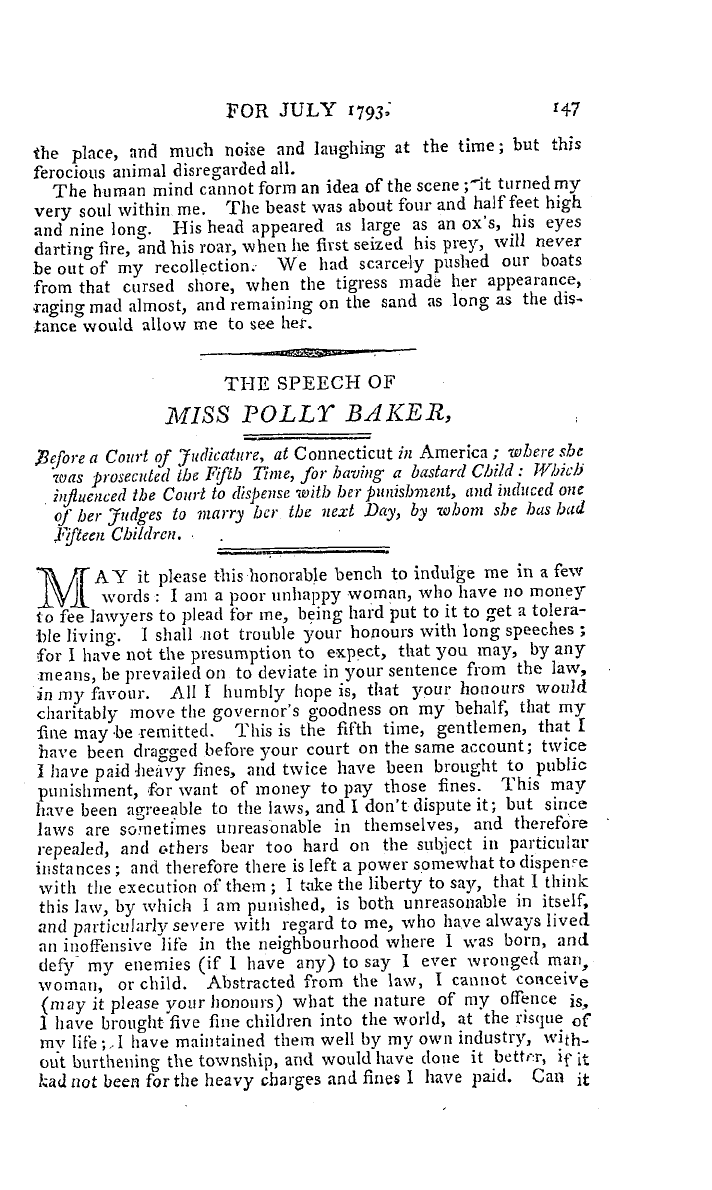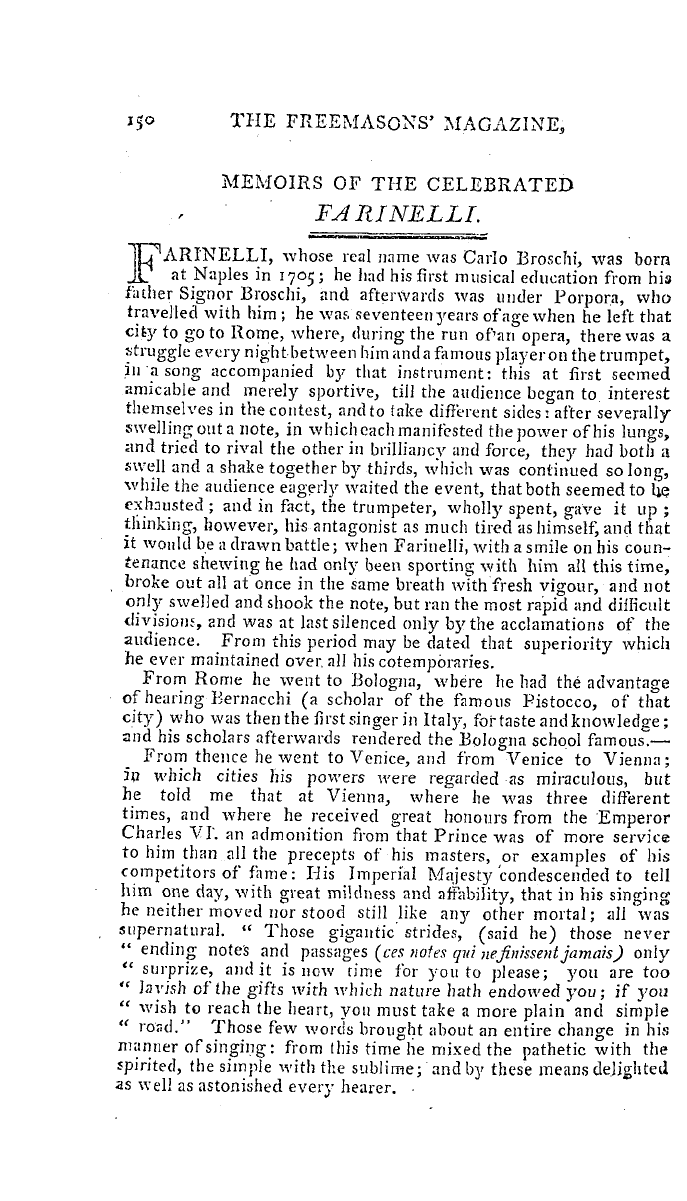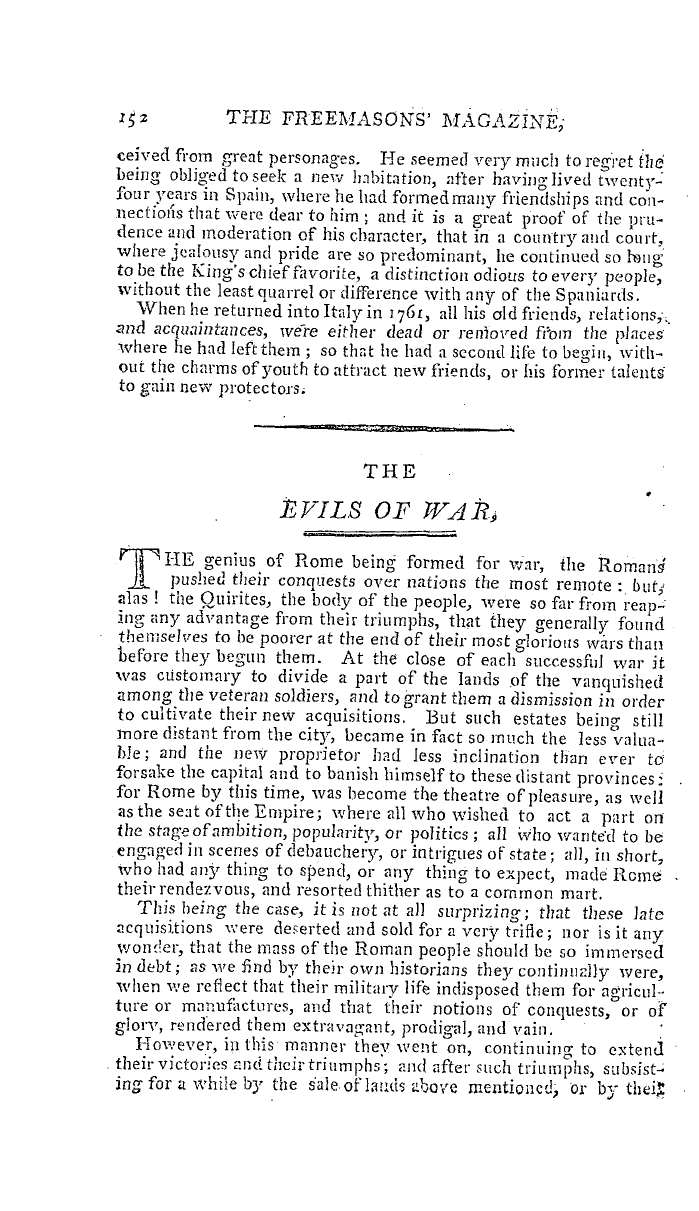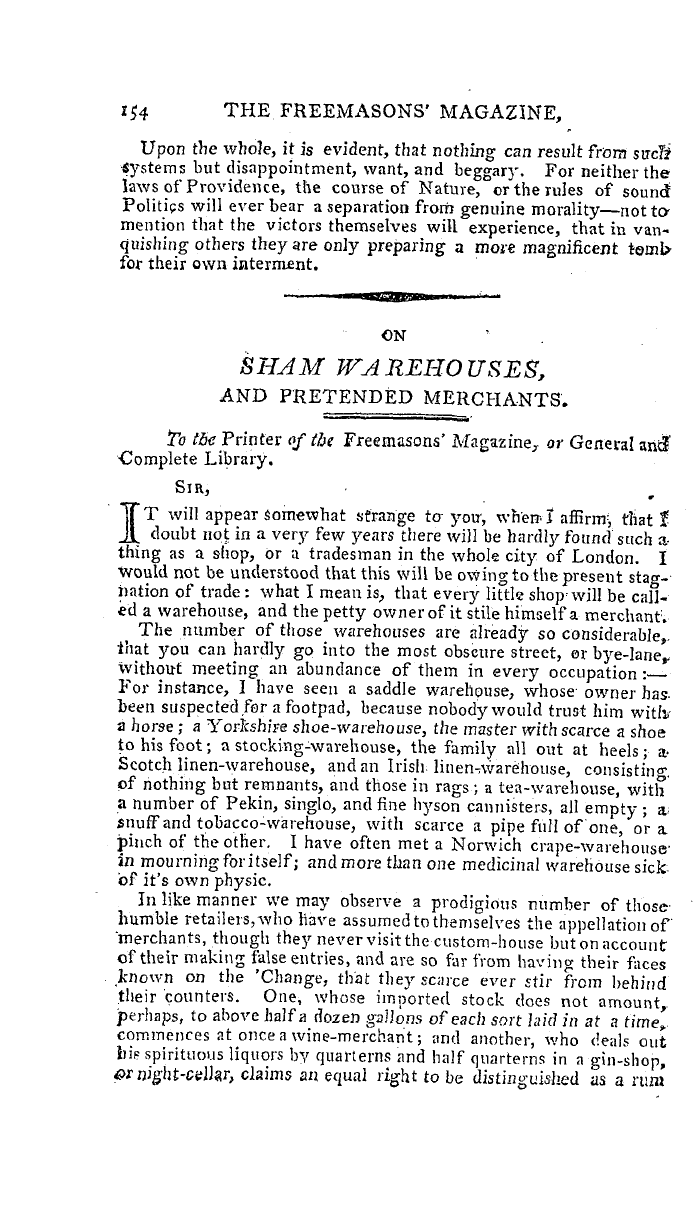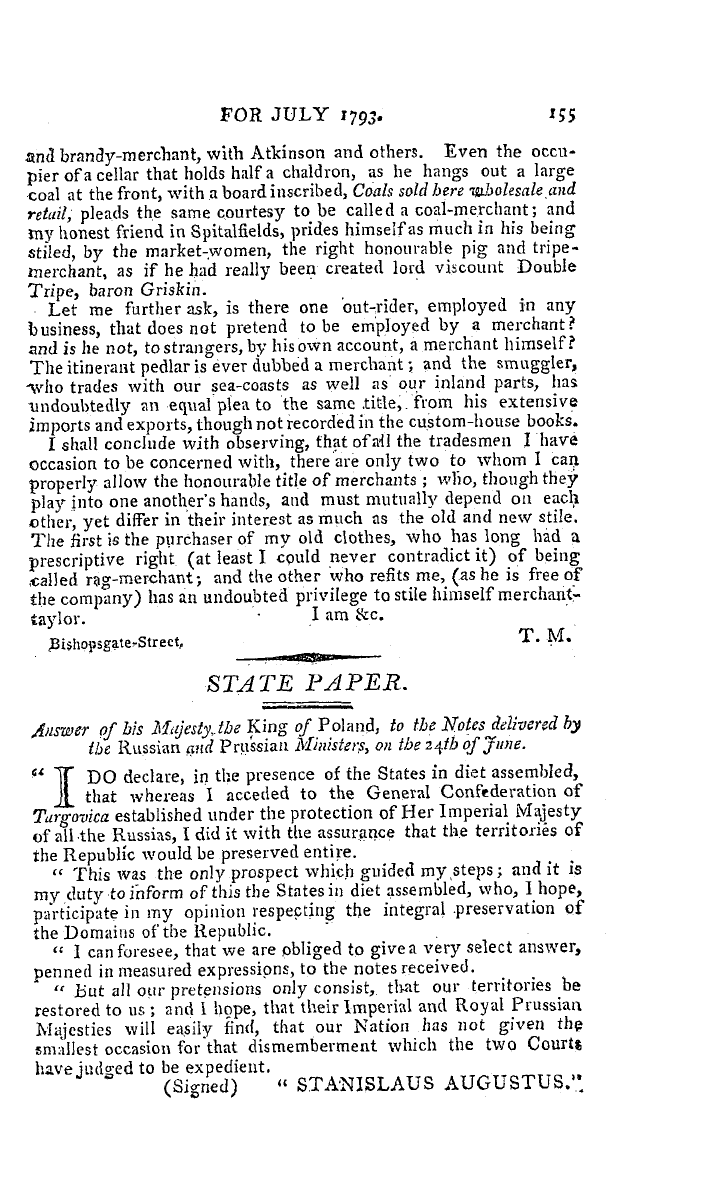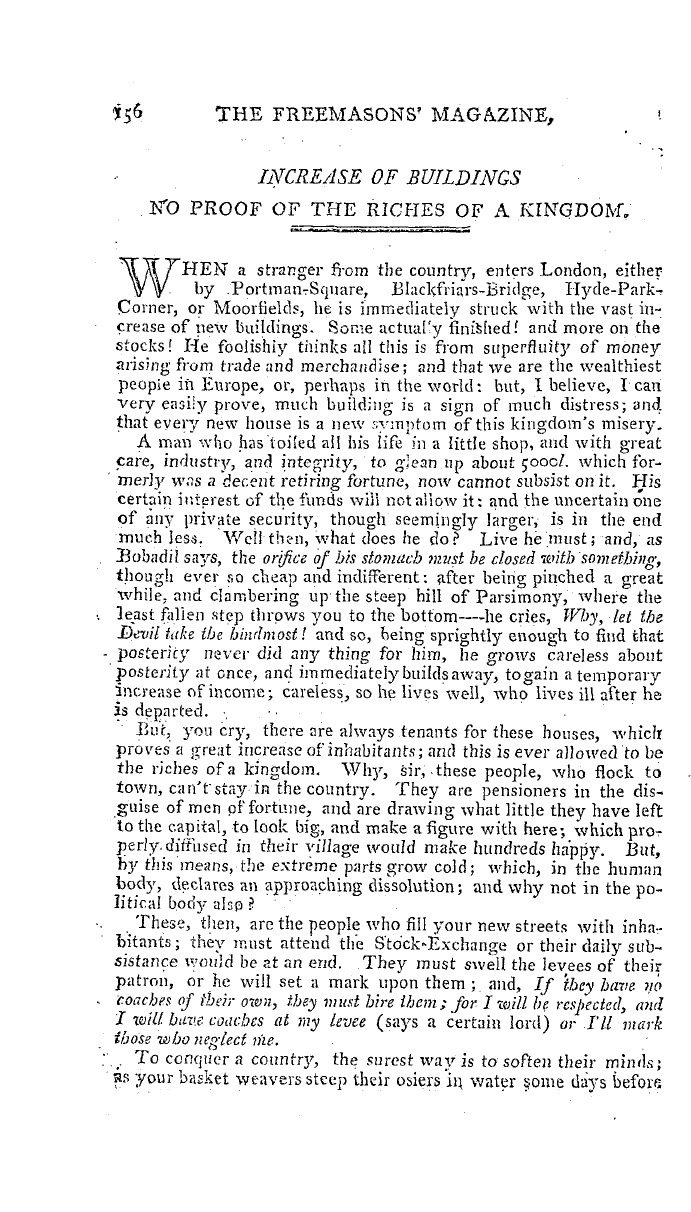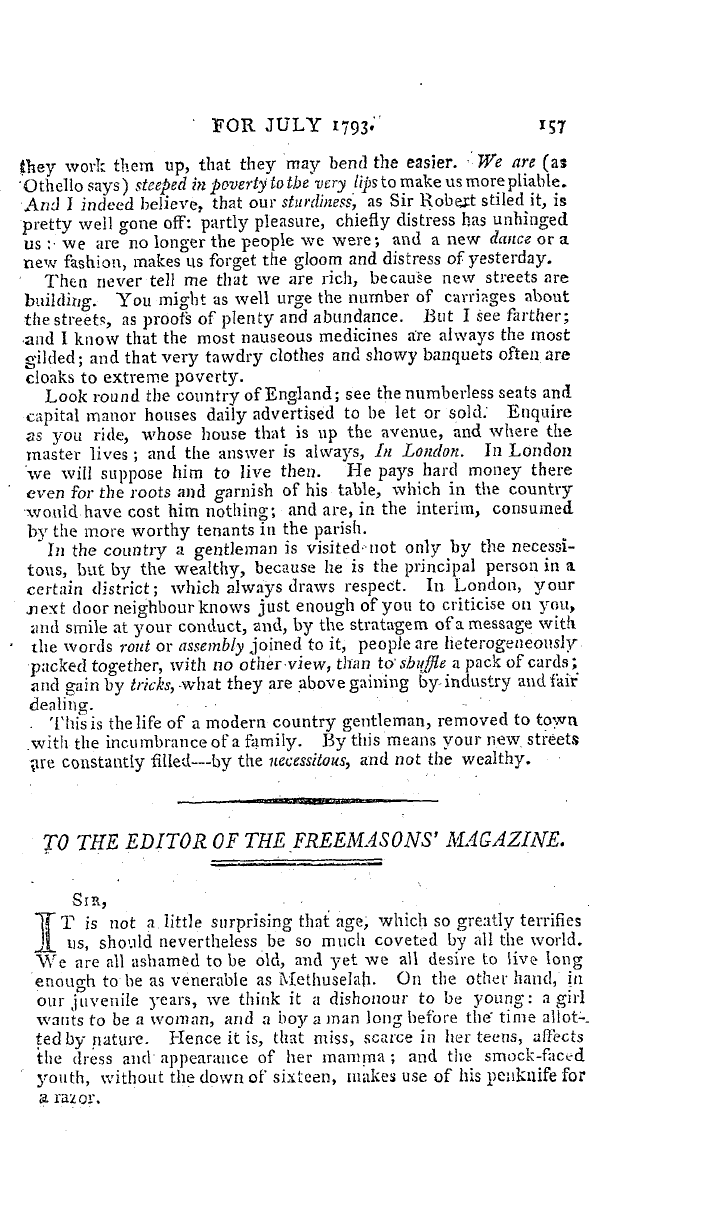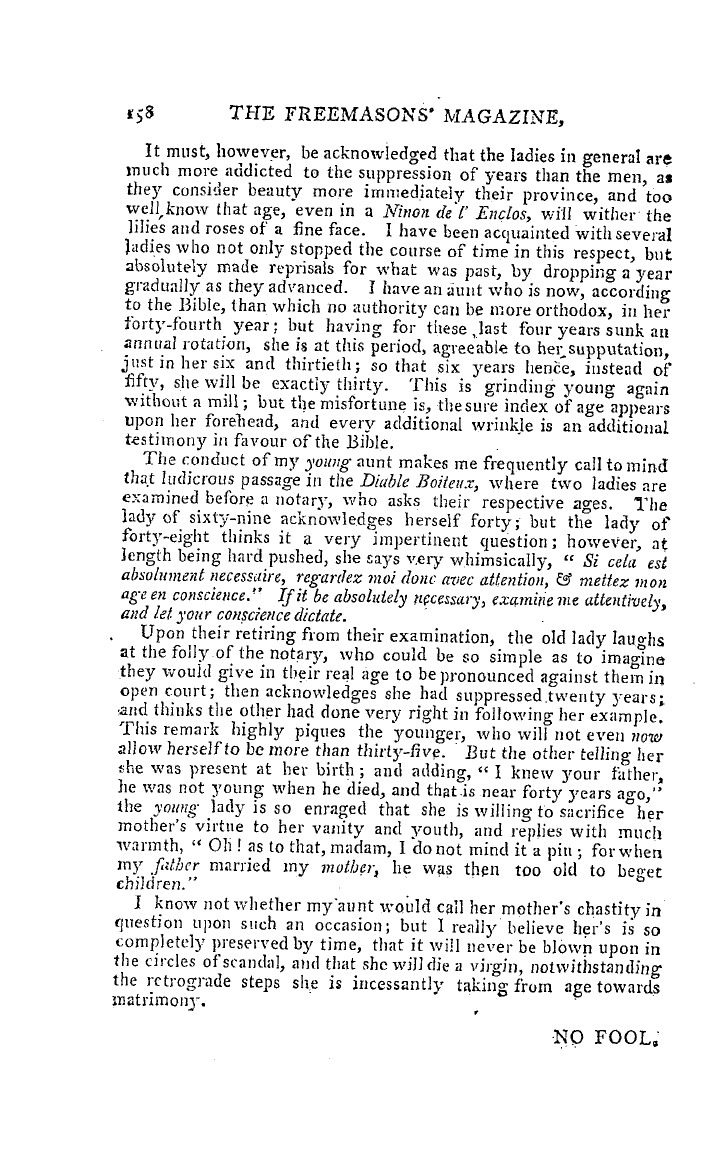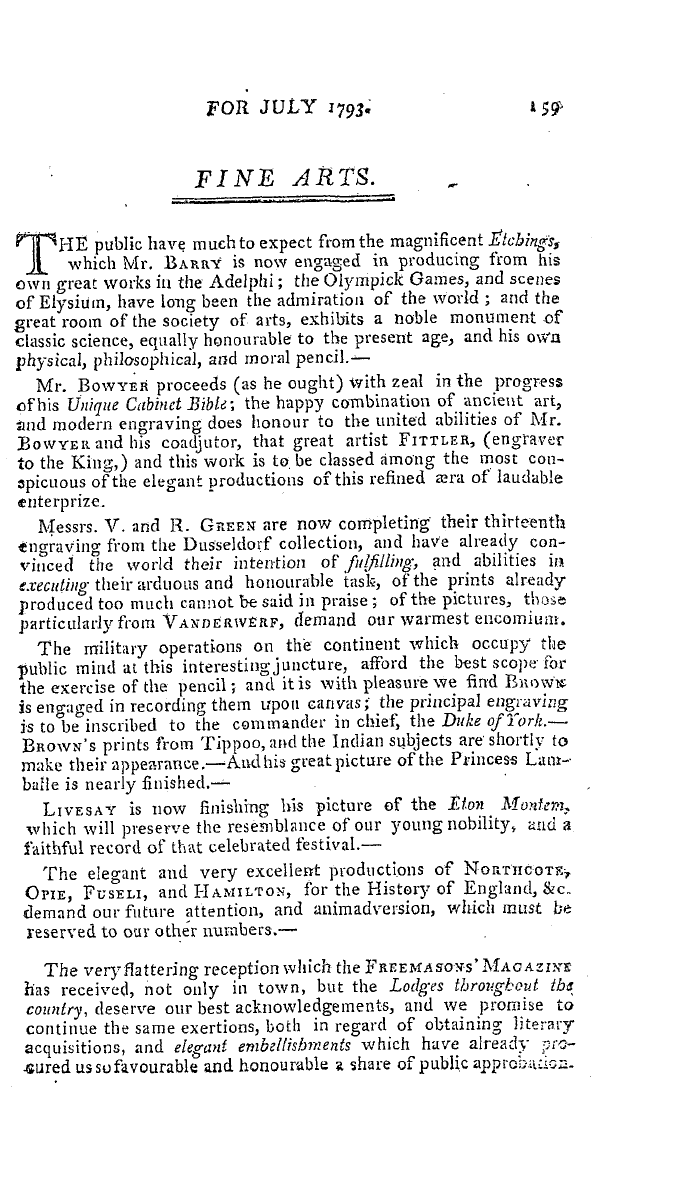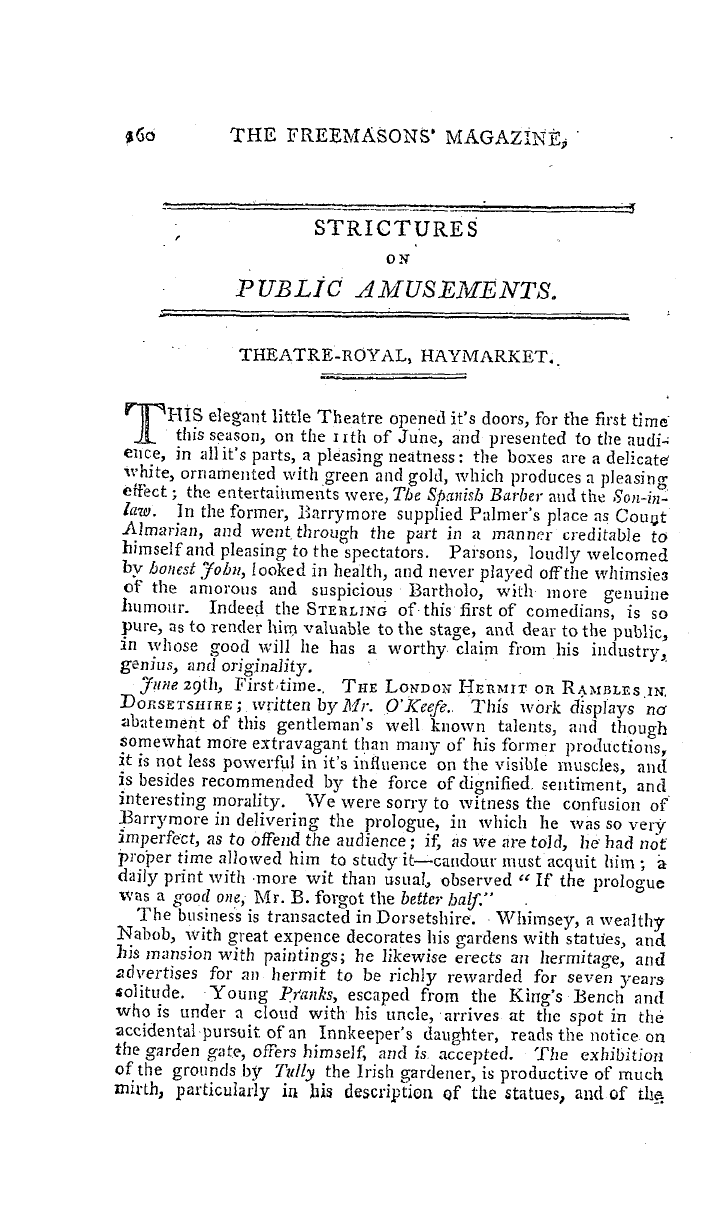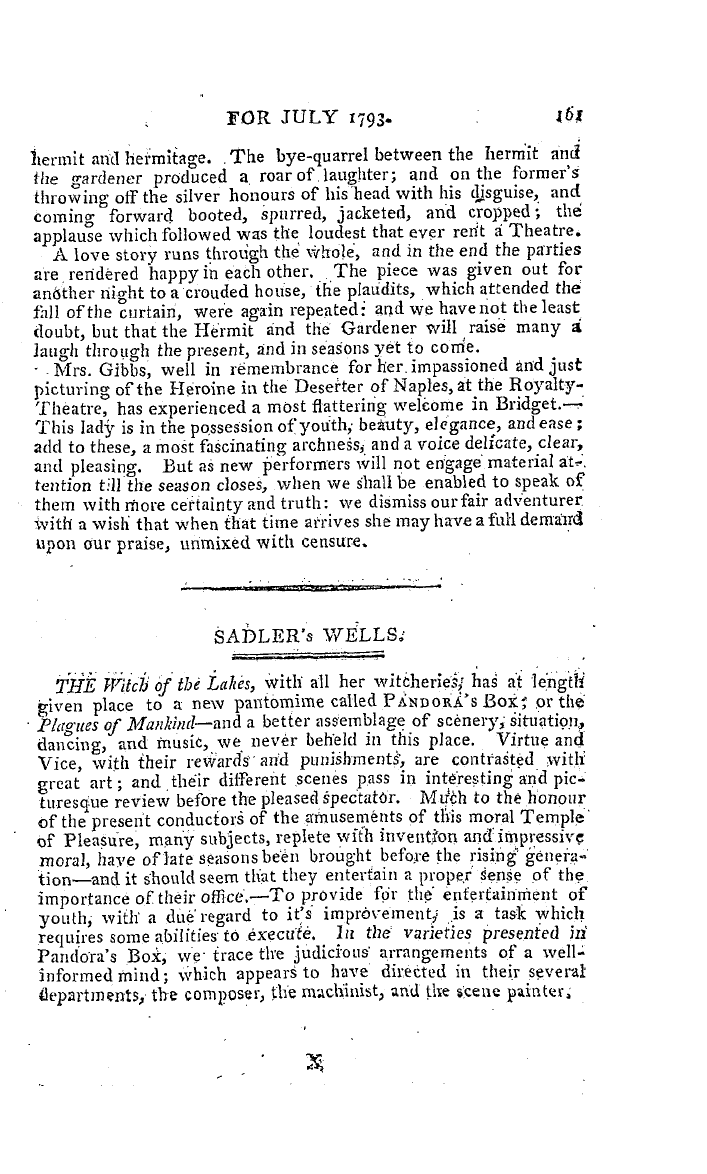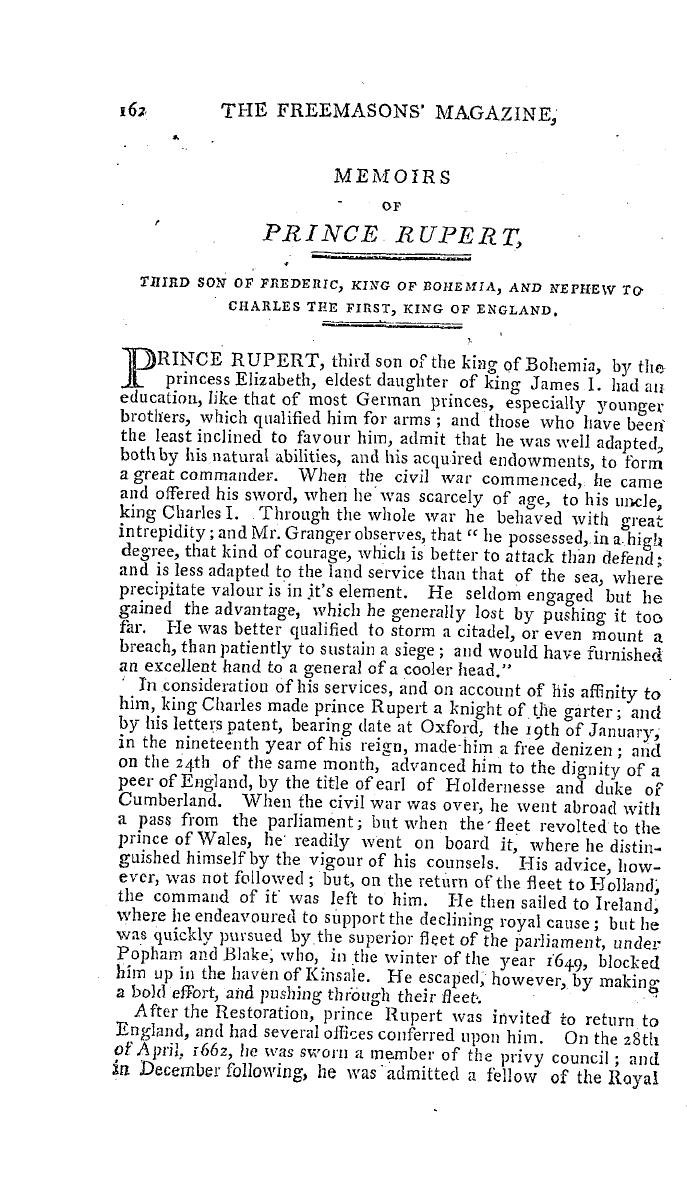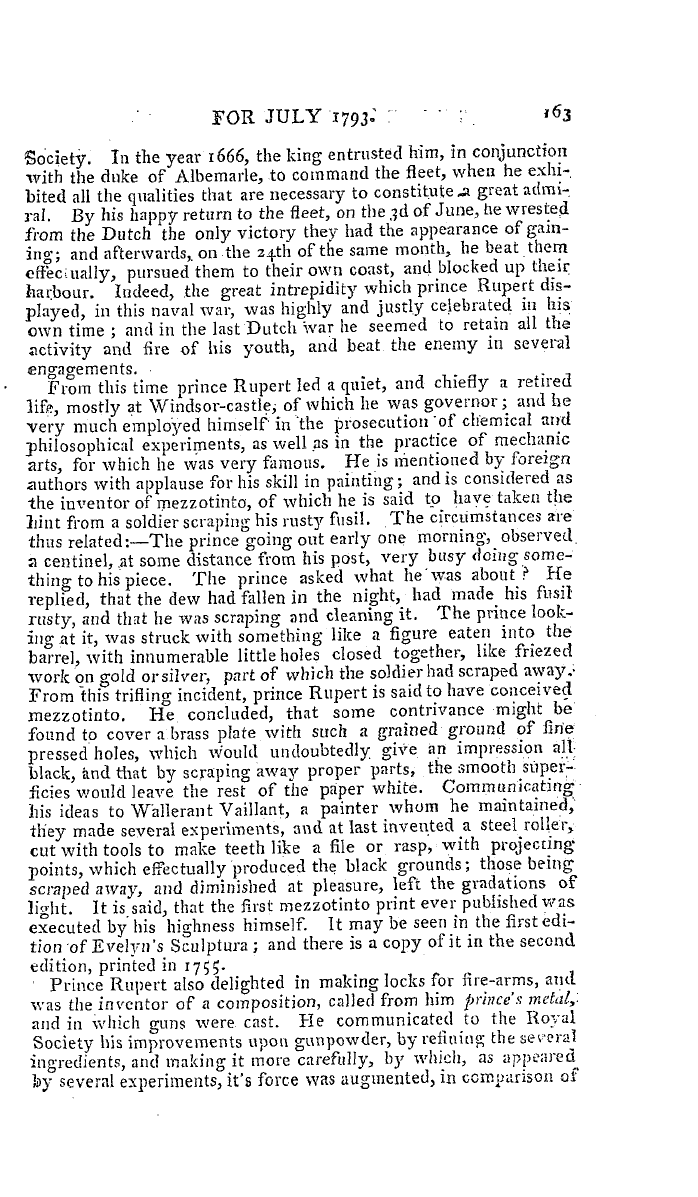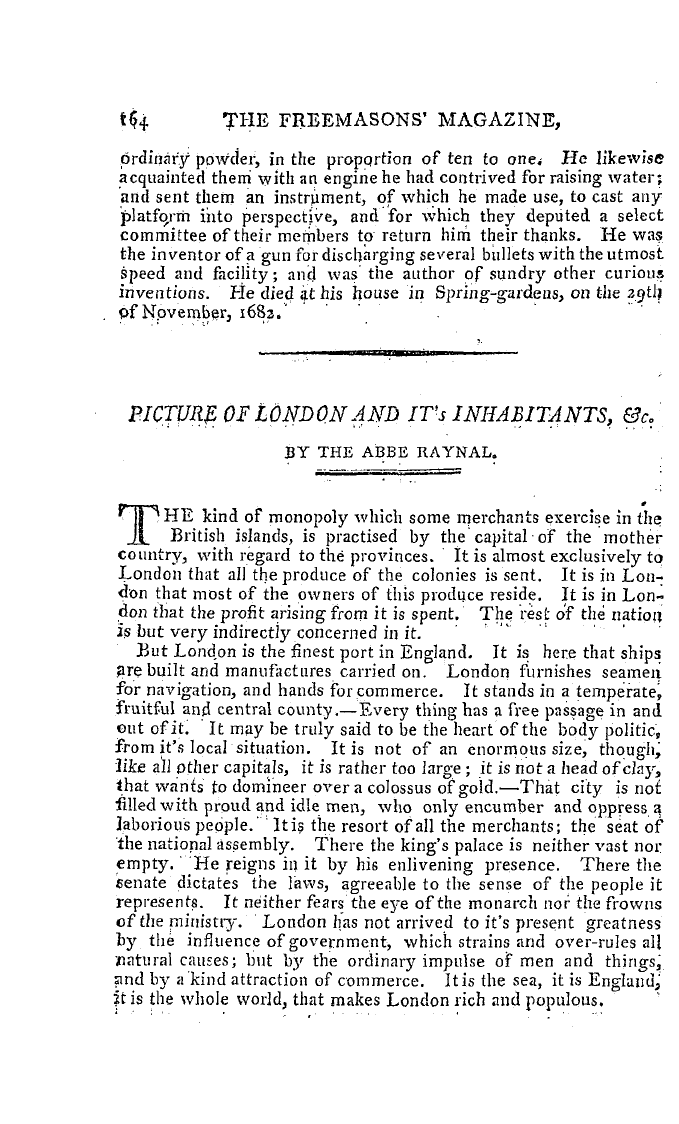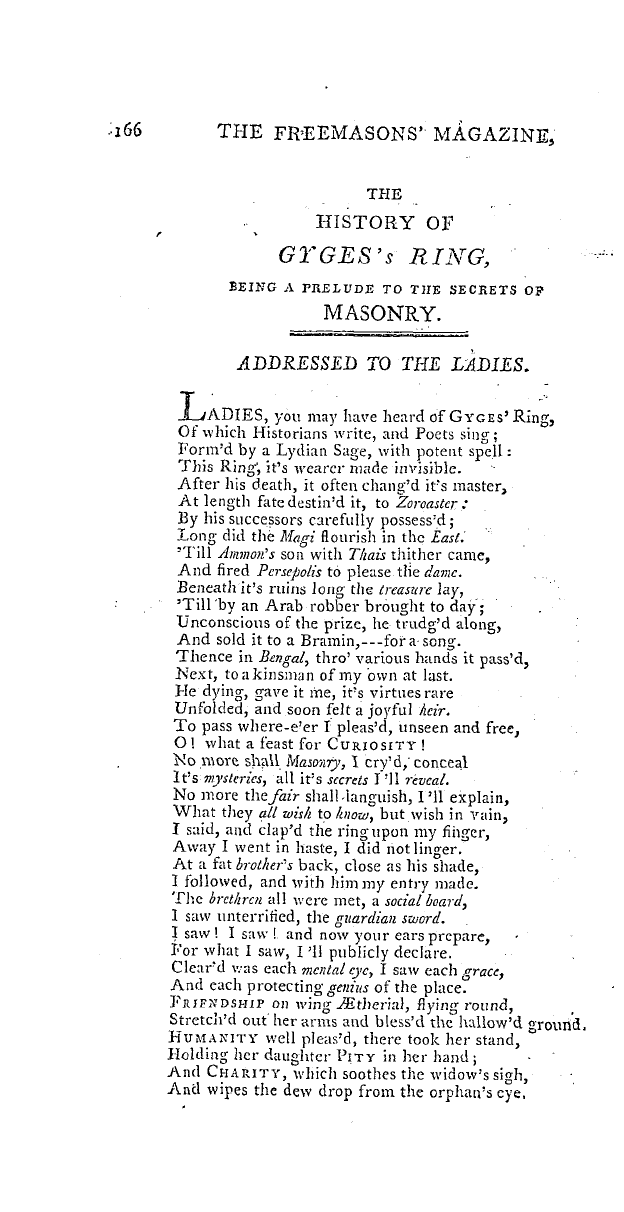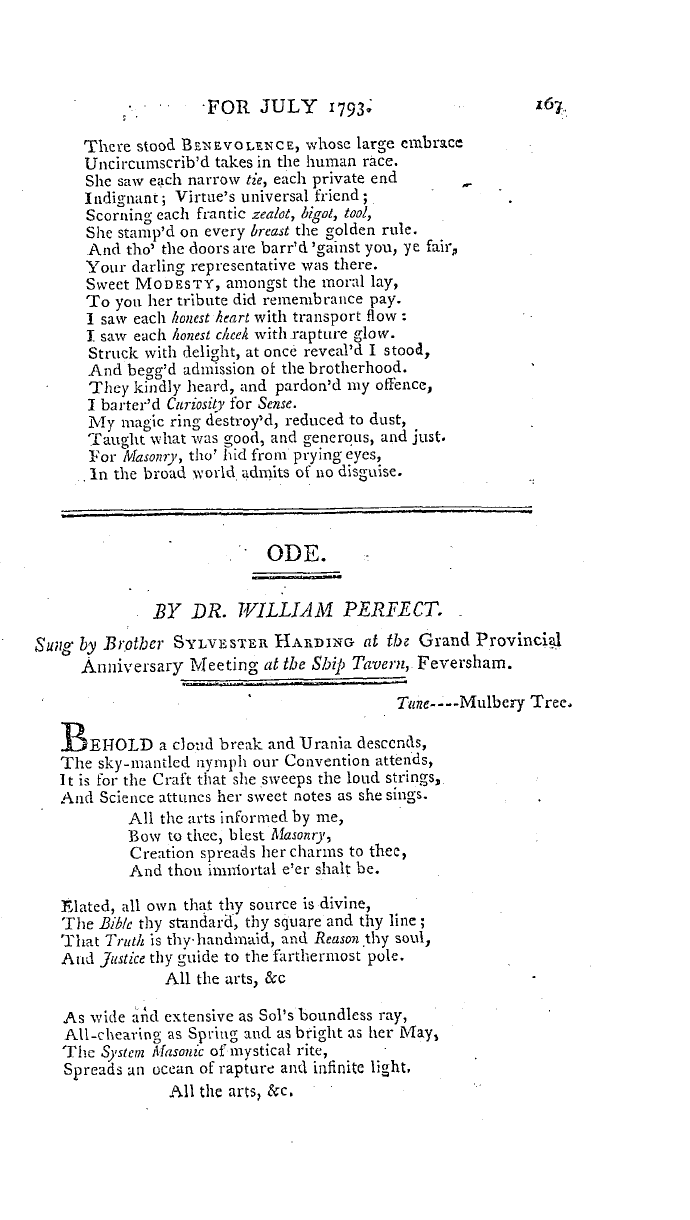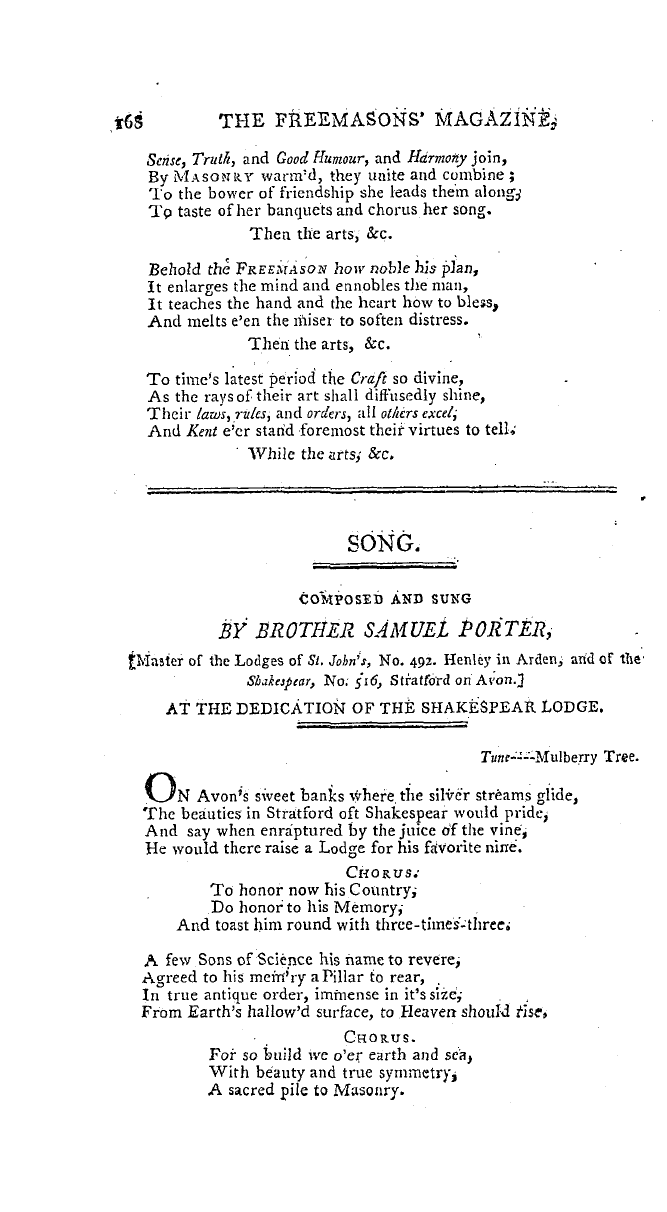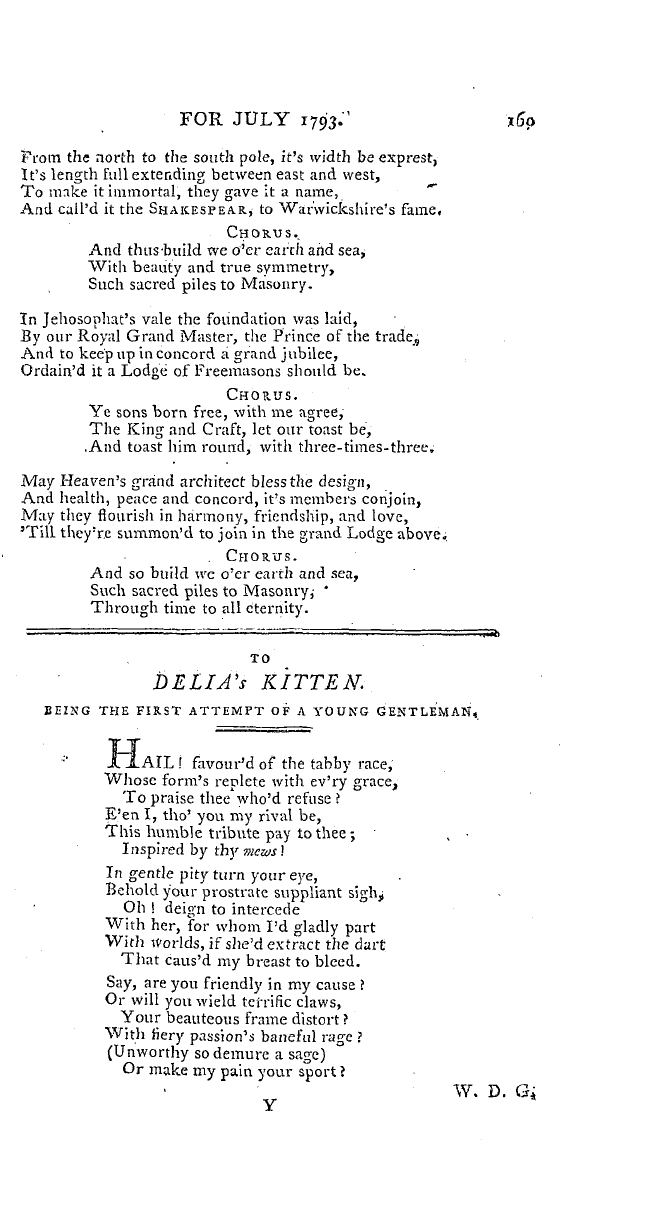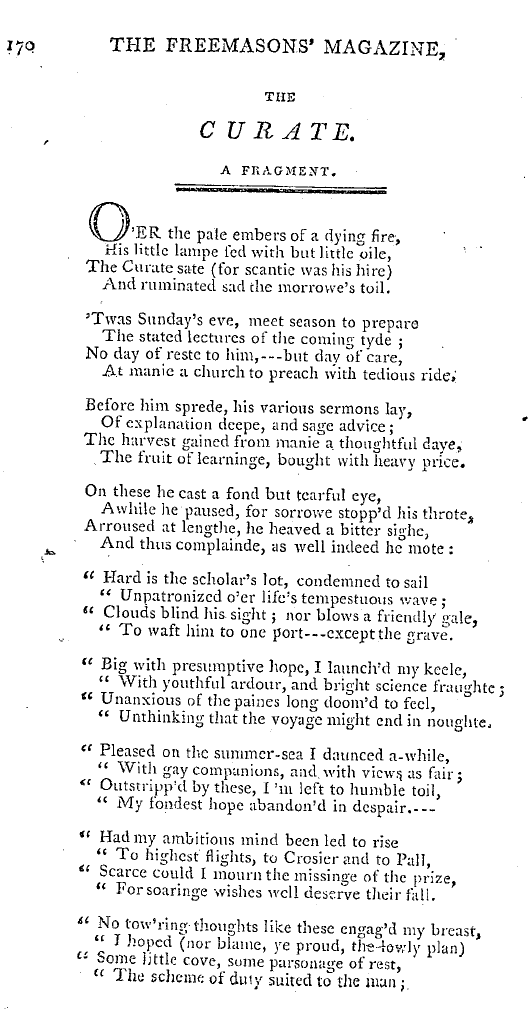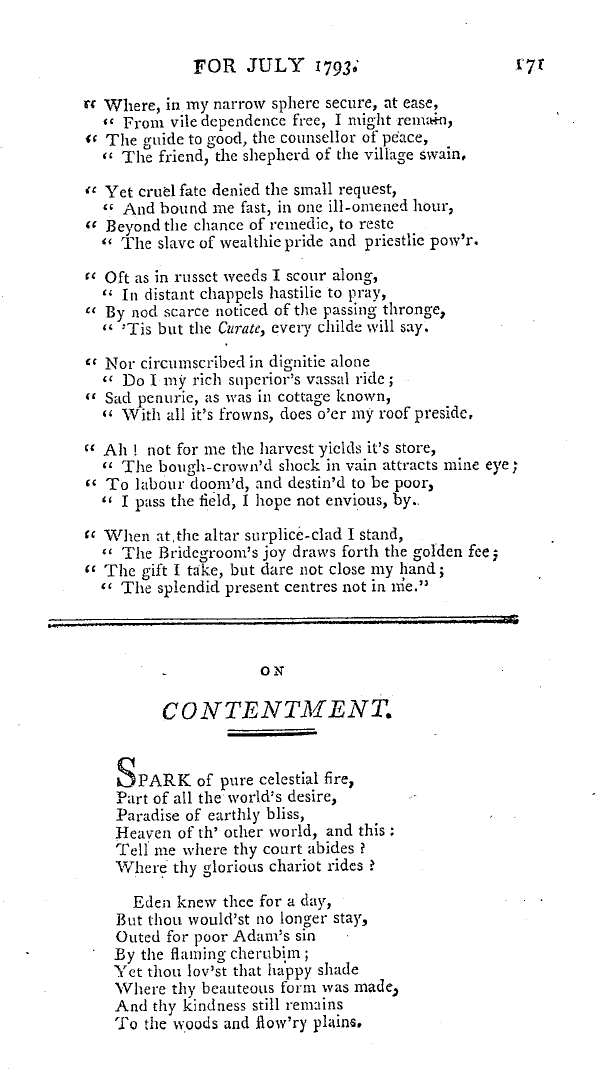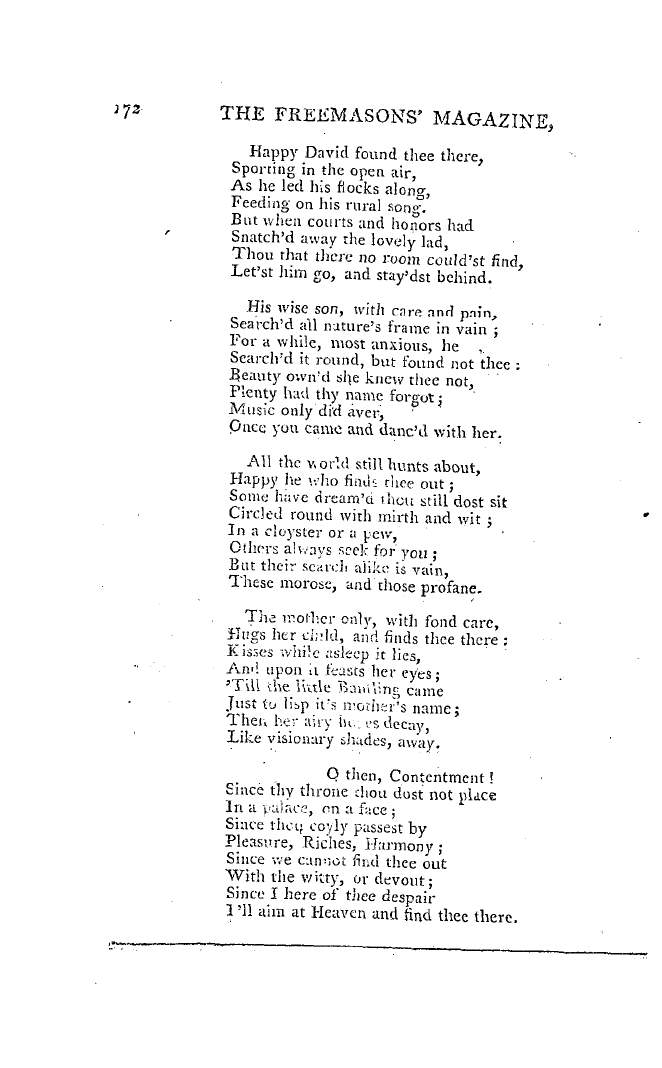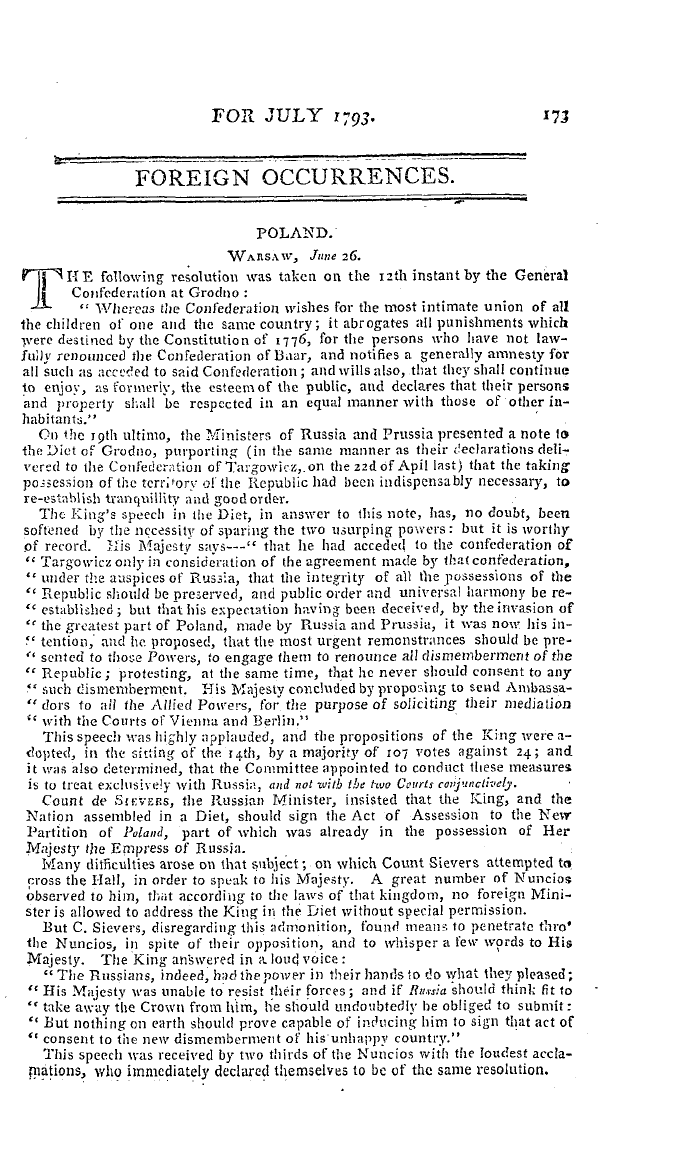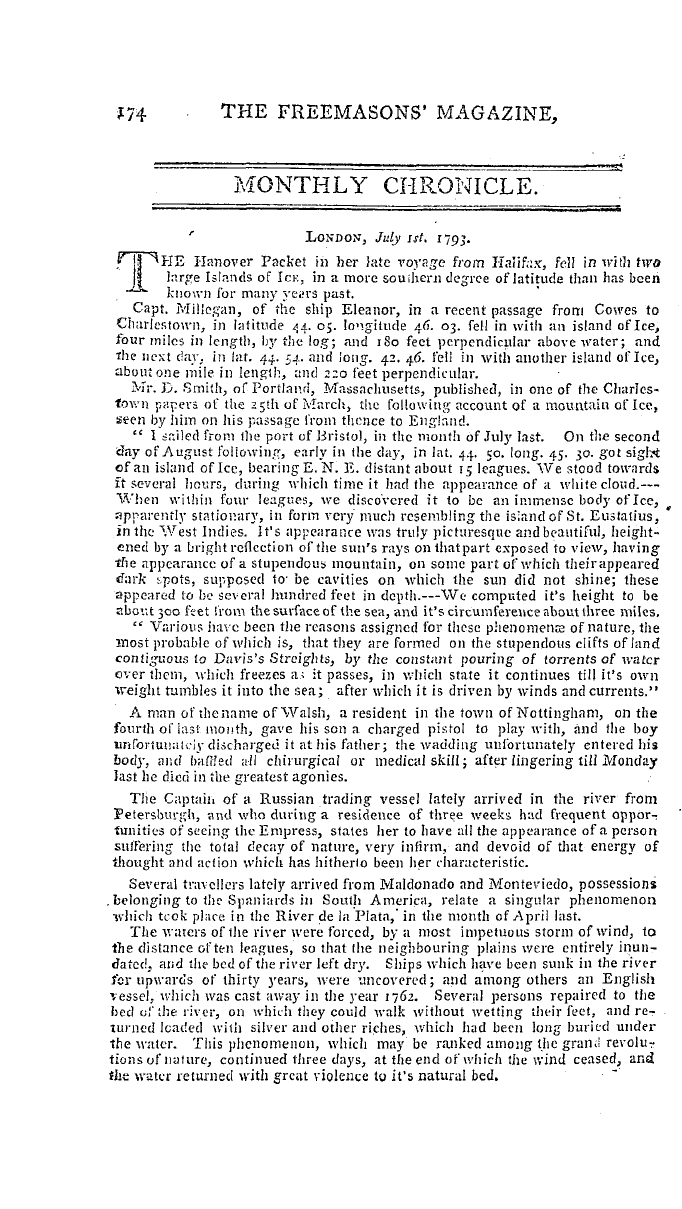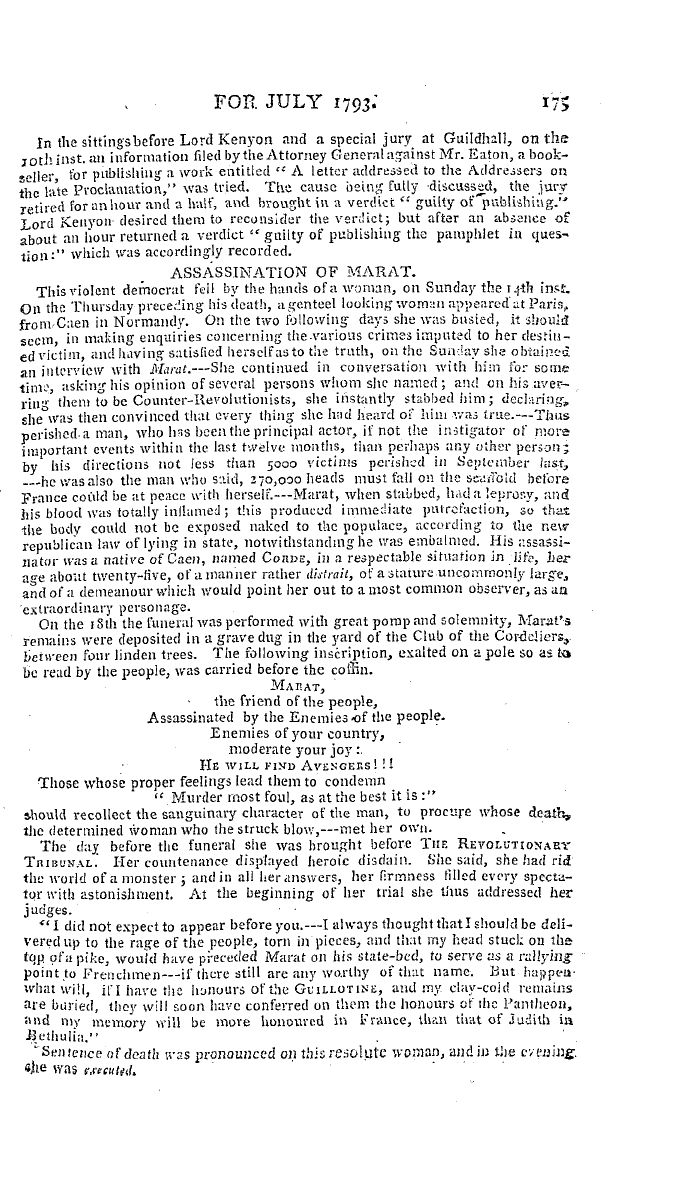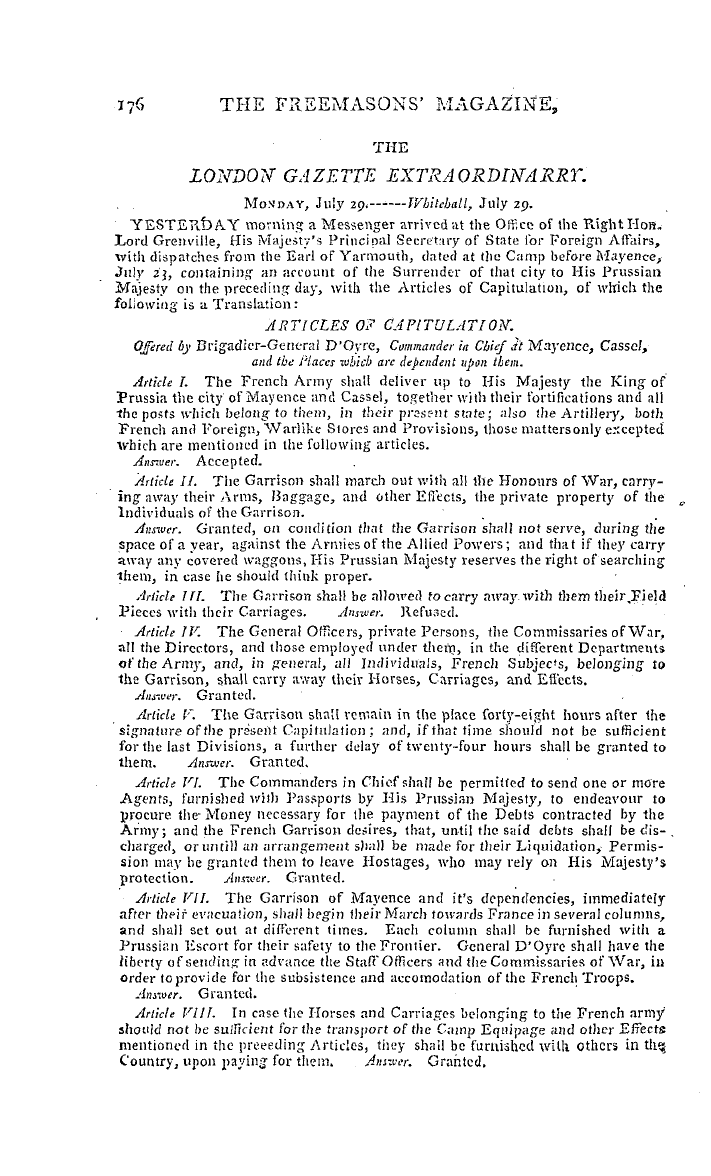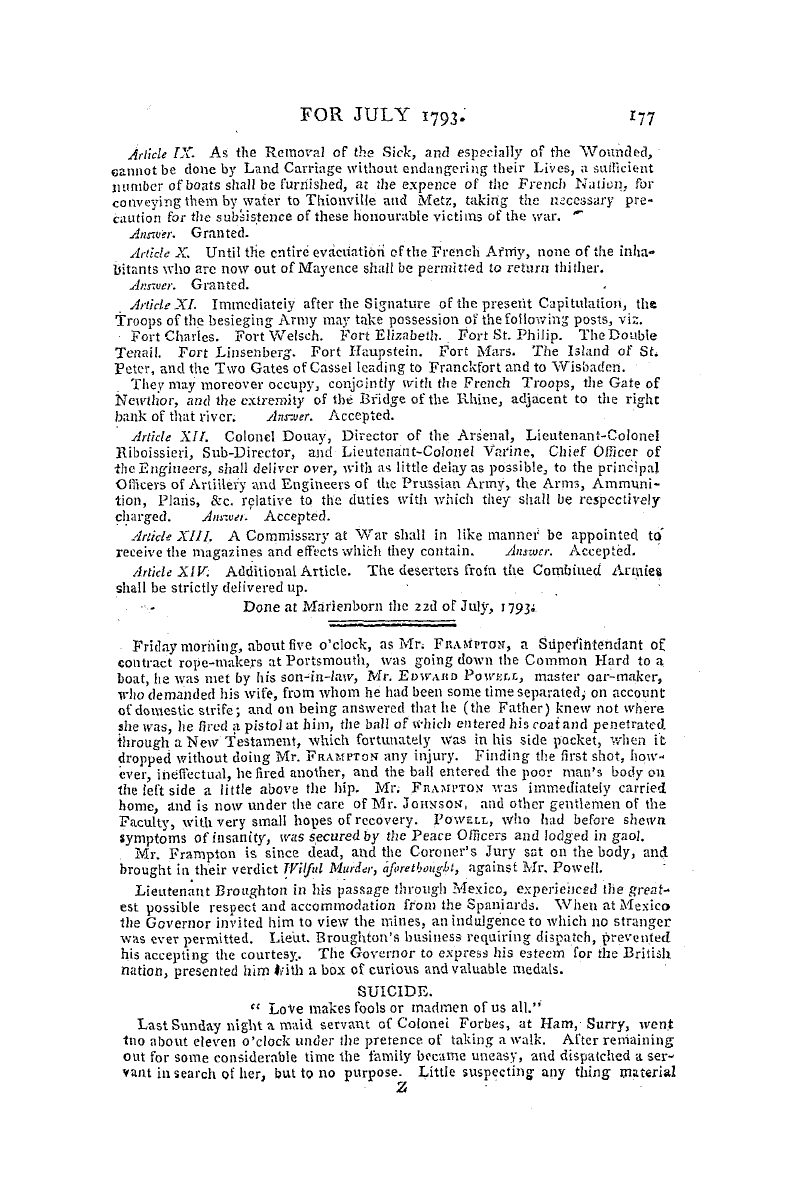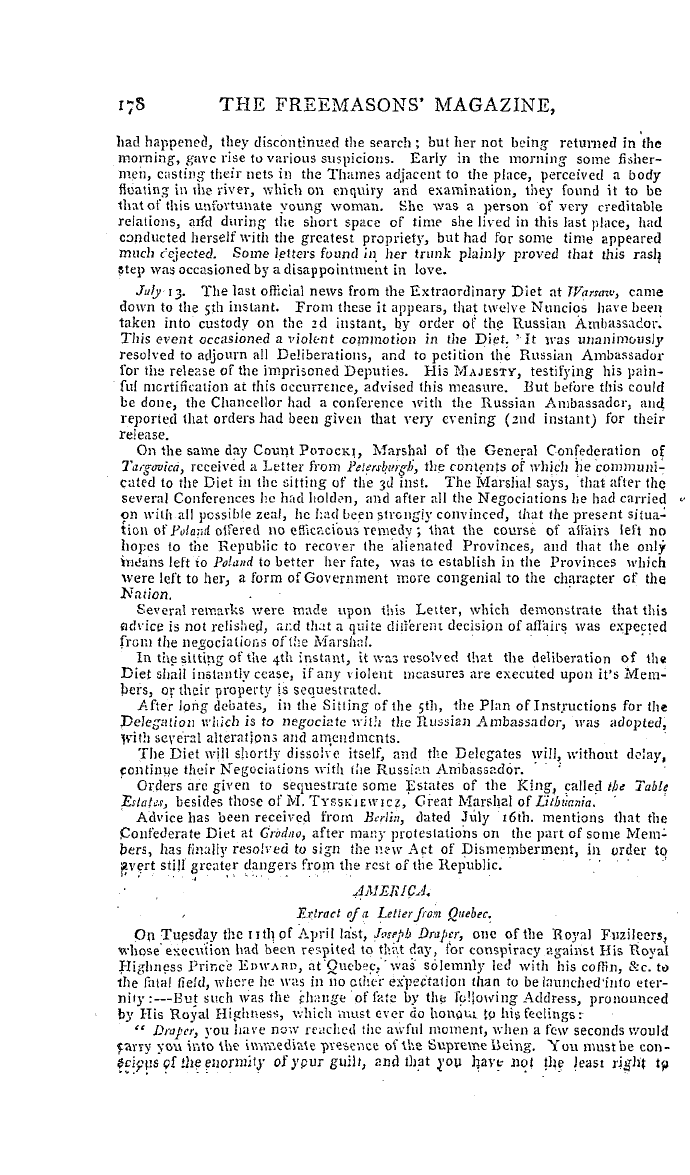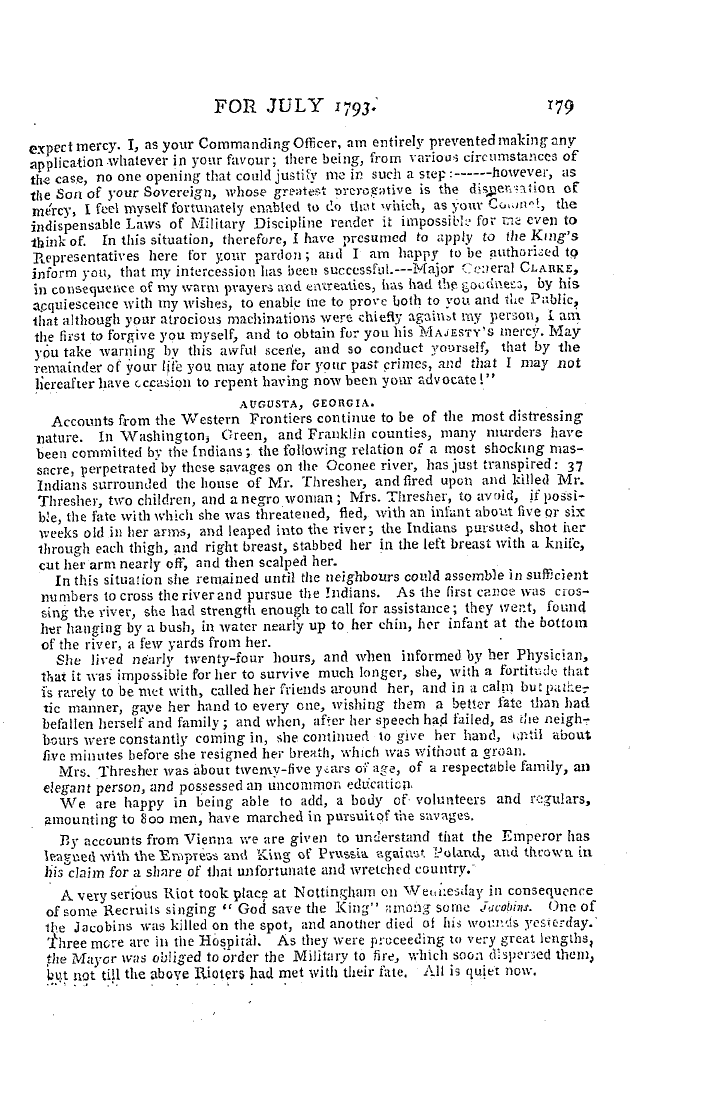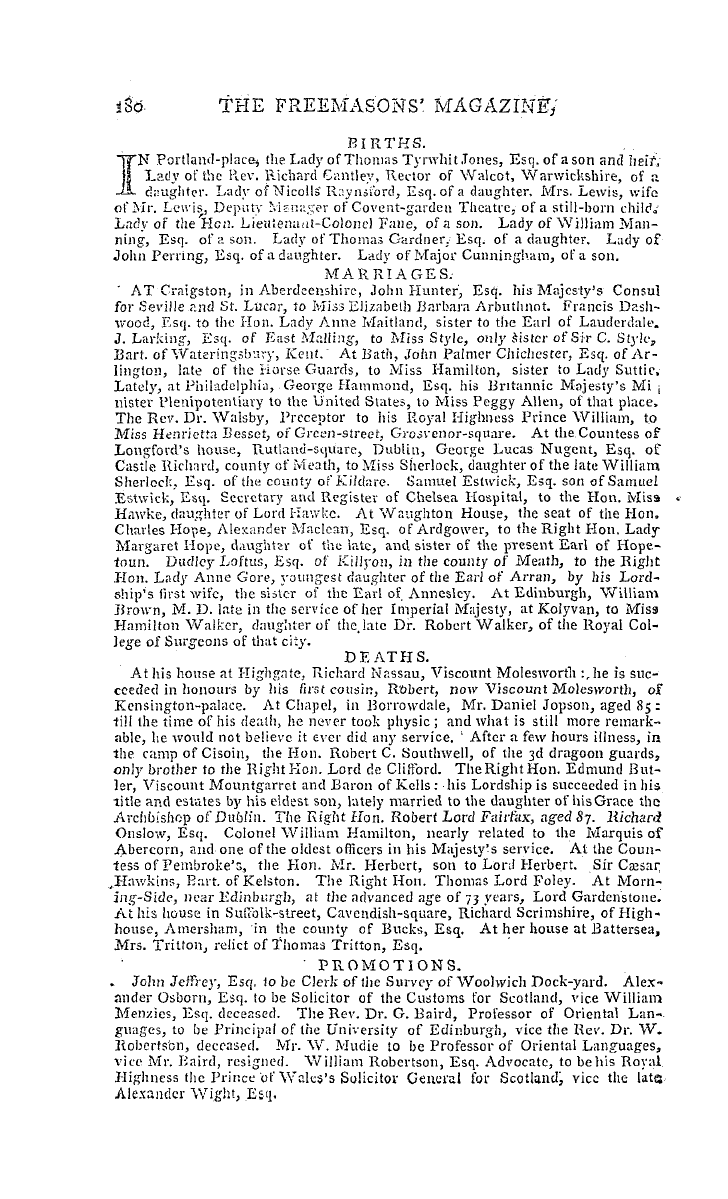-
Articles/Ads
Article OF ANIMALS LIVING IN SOLID BODIES. Page 1 of 2 →
Note: This text has been automatically extracted via Optical Character Recognition (OCR) software.
Of Animals Living In Solid Bodies.
OF ANIMALS LIVING IN SOLID BODIES .
IN Toulon harbour , and the road , are found solid hard stones , and perfectly entire , containing , in different cells , secluded from all communication with the air , several living shell-fish , of an exquisite taste , called Dacty / i , i . e . Dates : to come at these fish the stones are broken with mauls . Also , along the coast of Ancona , in the Adriatic , are stones , usually weighing about fifty pounds , and sometimes
even more , the outside rugged , and easily broken , but the inside so hard , as to require a strong arm , and an iron maul to break them ; within them , and in separate niches , are found small shell-fish , quite alive , and very palatable , called Solennes , or Cuppe lunghe : the facts are attested by Gassendi , Blonde ] , Mayol , the learned bishop of Suituraraand more particularlby Aldrovandi
, y , a physician , of Bologna ; the two latter speak of it as a common fact , which they themselves saw . In the volume for 1719 , of the academy of sciences at Paris , is the following passage : "In the foot of an elm , of the bigness of a pretty corpulent man , three or four feet above the rootand exactlin the centrehas
, y , been found a live toad , middle sized , but lean , and filling up the whole vacant space : no sooner was a passage opened by splitting the wood than it scuttled away very hastily ; a more firm and sound elm never grew ; so that the toad cannot be supposed to have got into it . The egg , whence it was formed , must , by some very singular accidenthave been lodged in the tree at it ' s first growth .
, There the creature had lived without air , feeding on the substance of the tree and growing only as the tree grew . This is attested by Mr . Hubert , professor of philosophy at Caen . " The volume for the year 1731 , has a similar observation , expressed in these words :
" In 1719 we gave an account of a fact , which , though improbable , was well attested ; that a toad had been found living and growing in the stem of a middling elm , without any way for the creature to come out or to have got in . M . Seigne , of Nantes , lays before the academy a fact just of the very same nature , except that , instead of an elm , it was an oak , and larger than the elm , which still heightens the wonder . He judges , b }^ the time requisite for
the growth of the oak , that the toad must have subsisted in it , without air , or any adventitious aliment , during eighty or a hundred years . M . Seigne seems to have known nothing of the fact in [ 719 , With the two forgoing , may be classed a narrative of Ambrose Parre , chief surgeon to Henry III . King of France , who , being a very sensible writer , relates the following fact , of which he was aa eye-witness :
Note: This text has been automatically extracted via Optical Character Recognition (OCR) software.
Of Animals Living In Solid Bodies.
OF ANIMALS LIVING IN SOLID BODIES .
IN Toulon harbour , and the road , are found solid hard stones , and perfectly entire , containing , in different cells , secluded from all communication with the air , several living shell-fish , of an exquisite taste , called Dacty / i , i . e . Dates : to come at these fish the stones are broken with mauls . Also , along the coast of Ancona , in the Adriatic , are stones , usually weighing about fifty pounds , and sometimes
even more , the outside rugged , and easily broken , but the inside so hard , as to require a strong arm , and an iron maul to break them ; within them , and in separate niches , are found small shell-fish , quite alive , and very palatable , called Solennes , or Cuppe lunghe : the facts are attested by Gassendi , Blonde ] , Mayol , the learned bishop of Suituraraand more particularlby Aldrovandi
, y , a physician , of Bologna ; the two latter speak of it as a common fact , which they themselves saw . In the volume for 1719 , of the academy of sciences at Paris , is the following passage : "In the foot of an elm , of the bigness of a pretty corpulent man , three or four feet above the rootand exactlin the centrehas
, y , been found a live toad , middle sized , but lean , and filling up the whole vacant space : no sooner was a passage opened by splitting the wood than it scuttled away very hastily ; a more firm and sound elm never grew ; so that the toad cannot be supposed to have got into it . The egg , whence it was formed , must , by some very singular accidenthave been lodged in the tree at it ' s first growth .
, There the creature had lived without air , feeding on the substance of the tree and growing only as the tree grew . This is attested by Mr . Hubert , professor of philosophy at Caen . " The volume for the year 1731 , has a similar observation , expressed in these words :
" In 1719 we gave an account of a fact , which , though improbable , was well attested ; that a toad had been found living and growing in the stem of a middling elm , without any way for the creature to come out or to have got in . M . Seigne , of Nantes , lays before the academy a fact just of the very same nature , except that , instead of an elm , it was an oak , and larger than the elm , which still heightens the wonder . He judges , b }^ the time requisite for
the growth of the oak , that the toad must have subsisted in it , without air , or any adventitious aliment , during eighty or a hundred years . M . Seigne seems to have known nothing of the fact in [ 719 , With the two forgoing , may be classed a narrative of Ambrose Parre , chief surgeon to Henry III . King of France , who , being a very sensible writer , relates the following fact , of which he was aa eye-witness :




























































